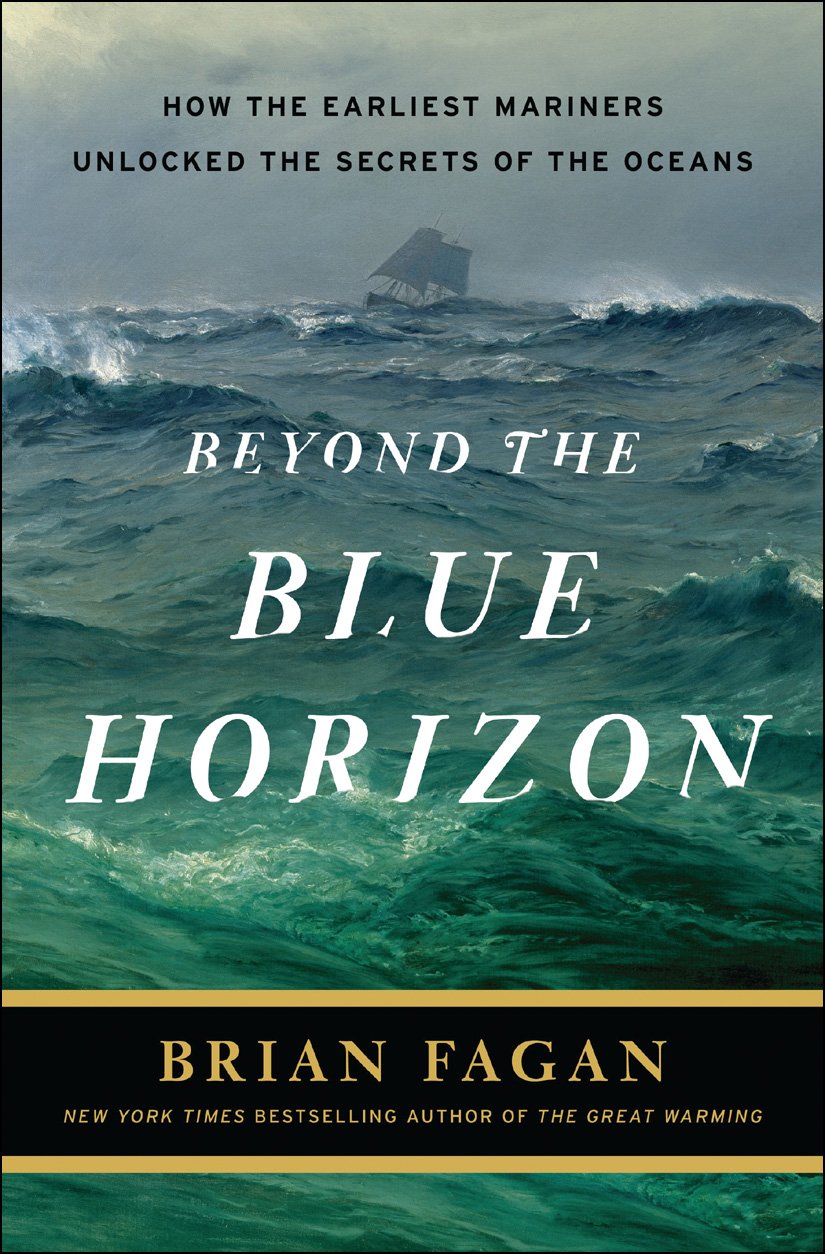Beyond the Blue Horizon: how the earliest mariners unlocked the secrets of the oceans
by Brian Fagan

Notes
5I wish this book were about twice, maybe three times, as long as it is, and I wish it went into much more detail. In its defense, there are many cases where we don’t know much more than what’s presented.
I found this book at the Apalachicola library. We often take the kids to libraries, it’s good free rainy day entertainment, although usually, since we lack a local address, we have to leave empty handed. The Apalachicola library though will apparently hand out a library card to just about anyone, local or not, which is how I came to spend a couple of week at the beach reading Beyond the Blue Horizon
If you’ve ever wondered why, how or where, humans first got the courage to sail over the horizon, Fagan has some very convincing theories for virtually all the major coastal areas of the world. That said, they are of course hypothesises, not facts. We’ll never really know who first went over the horizon into the unknown or why they did it, but Fagan is able to tease out some compelling stories.
Fagan covers the sailing canoes of Polynesia, the North Sea and the Irish monks from Ceide Fields, early trips across Sunda and Sahel shelves in Southeastern Asia (encompassing everything from Malaysia to the Philippines), the east African/Persian coast with it’s reliable trade winds, the Mediterranean, the Aleutian area, even the Gulf of Mexico where I sat on the shore, reading the book.
There’s quite a few reviews of this book on the web where people seem somehow put off at the amount of sheer conjecture in the book. If you’re looking for certainty, reading about the edge of known history is probably not for you.
It’s true that there isn’t a lot of archaeological evidence in many cases, boats don’t last that long, there’s hardly any boats left from just 200 years ago, let alone 2000 years ago. But Fagan is himself a sailor, has sailed many of these routes himself and knows well what sailors watch for and watch out for. Winds generally follow patterns, vague and seemingly arbitrary though they may be, tides follow much stricter patterns and sailors, like the rest of us, follow patterns as well.
Because he’s sailed many of the routes, he’s able to weave in his own stories, as well as imagined stories of ancient sailors into the narrative to create a far more compelling story than most archaeological texts I’ve read. It’s also the kind of book where all of my highlights are really reminders of other books on the subject that I’d like to read eventually.
If you enjoy sailing or have ever wondered how ancient sailors did it, this book is well worth a read.
Highlights:
Alan Villiers spent a year just before World War II on an Indian Ocean boom, a large variant of the dhow, which he boarded at Aden. Villiers lived among the crew, sleeping on the captain’s bench on the quarterdeck, observing a trading voyage whose rhythm was unchanged for many centuries.
– Page: 136
Wilfred Thesiger lived among the Marsh Arabs of the south during the 1930s and ’40s, he found himself in an isolated world governed entirely by water. Anyone wanting to go anywhere had to step from their hut into a reed boat, even when just visiting a neighbor, let alone a nearby village.
– Page: 130
Tradition falls prey to constant change, and creativity becomes so revered that the past is a relic, only to be admired.
– Page: 124